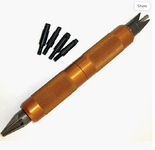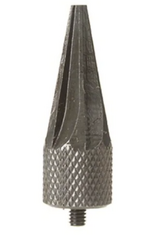Bronze Supporter
- Messages
- 5,098
- Reactions
- 9,057
I'm starting to reload .223 and am doing batch prep of cases. For trimming, I'm using a Lyman E-zee Trim with the bits mounted in a battery operated drill. There is good reason to deburr the outside of the cases, but not understanding why the need to chamfer, ream, or otherwise remove any additional material from inside the case neck. I'm concerned that it may be an issue of thinning and weakening the case.
Is there really an issue with burrs inside the case mouth after trimming?
Is there really an issue with burrs inside the case mouth after trimming?
Last Edited:













